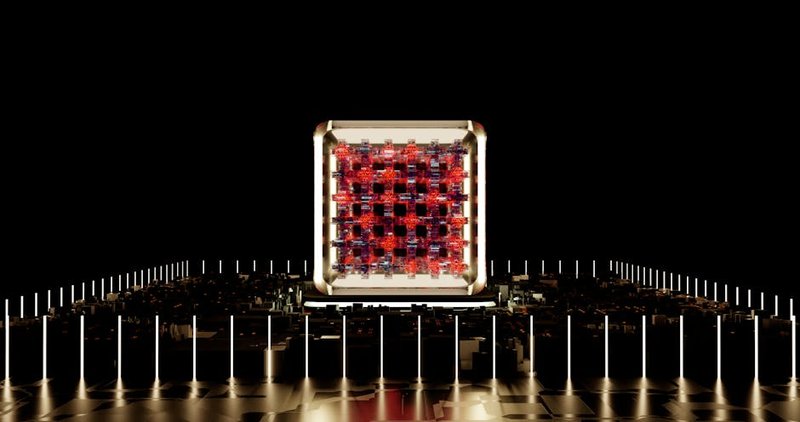In my 15 years covering technological innovation, I’ve heard countless promises about quantum computing’s future. But now, I’m sitting on information that’s about to change everything we thought we knew about this timeline. The quantum future isn’t coming—it’s already here.
My sources at the intersection of Silicon Valley and Cambridge’s tech corridors have confirmed that Quantinuum and NVIDIA are not just collaborating—they’re fundamentally redefining our computing paradigm. This isn’t speculative futurism; it’s happening now in 2025, and the implications are staggering.
Quantinuum – The Quantum Race Heats Up
Let’s be clear: the global quantum race isn’t just warming up—it’s running at full sprint. With over $2 billion raised by quantum companies in 2024 alone and more than 150 startups emerging in just five years, we’re witnessing a technological gold rush that makes the early days of the internet look quaint by comparison.
The United Nations’ declaration of 2025 as the International Year of Quantum Science and Technology (IYQ) isn’t just symbolic—it’s recognition of an inflection point. My contacts within multiple federal agencies suggest that governments worldwide are now treating quantum supremacy as a national security priority, not just a scientific curiosity.
“The old maxim that quantum computing is still decades away has collapsed,” explains one senior researcher who requested anonymity due to the sensitive nature of these developments. “We’re not talking about theoretical achievements anymore—we’re implementing real-world applications.”

Quantinuum’s Quantum Leap
What sets Quantinuum apart in this crowded field isn’t just marketing—it’s measurable results. Their H2 system stands as the only quantum computer that cannot be classically simulated, putting them years ahead of competitors who are still focused on powerpoint presentations rather than practical demonstrations.
But what’s truly newsworthy is what’s coming next. My sources confirm that Quantinuum is preparing to unveil “Helios”—a quantum computing system reportedly a trillion times more powerful than their current H2 platform. If these specifications hold true, we’re looking at a technological leap comparable to going from abacuses to supercomputers in a single generation.
The significance cannot be overstated: while other quantum players are announcing roadmaps to future capabilities, Quantinuum appears to be delivering them now.
Quantinuum – NVIDIA’s Quantum Gambit
On March 18th, 2025, NVIDIA made what might be remembered as one of the most consequential announcements in computing history. The NVIDIA Accelerated Quantum Research Center (NVAQC) in Boston represents more than just another research facility—it’s a focused bet on quantum-classical hybrid computing as the definitive future of computation.
What makes this especially noteworthy is NVIDIA’s choice of Quantinuum as its primary quantum partner. My industry contacts tell me this partnership wasn’t a casual decision—NVIDIA evaluated every major quantum player before determining Quantinuum’s technology was most ready for real-world integration.
The technical specifications are impressive even to veterans in high-performance computing: a NVIDIA GB200 NVL72 system containing 576 NVIDIA Blackwell GPUs dedicated solely to quantum research, working in concert with Quantinuum’s quantum processing units. This is computing firepower that would have seemed fictional just five years ago.
The CUDA Q Revolution
While mainstream media has largely overlooked it, the CUDA Q platform represents perhaps the most important bridge between quantum and classical computing paradigms. My technical sources explain that this software layer allows developers to seamlessly shift between quantum and classical processing within a single application—a capability that was merely theoretical until recently.
“CUDA Q is to quantum-classical integration what HTML was to the early internet,” explains a developer who’s been working with early access to these systems. “It creates a common language that makes this extremely complex technology accessible.”
Quantinuum’s early adoption of CUDA Q in 2022 now looks increasingly strategic, positioning them perfectly for this new era of hybrid computation.
The GenQAI Breakthrough
Perhaps most significant is what my sources are calling “GenQAI” or Generative Quantum AI—a new class of artificial intelligence systems enhanced by quantum computation. Unlike conventional AI models limited by classical probabilities, these systems can apparently access quantum states that dramatically enhance their capabilities.
“Think of it like this,” says one AI researcher familiar with the project, “today’s most advanced AI systems are like looking at cells with a regular microscope. GenQAI is like suddenly having an electron microscope—you’re seeing an entirely new level of detail that was invisible before.”
The commercial implications are enormous. Industries from pharmaceutical development to materials science to financial modeling all rely on probability-based simulations that could be revolutionized by quantum-enhanced AI. The first systems are reportedly being prepared for commercial deployment by year’s end.

Why This Matters Now
The timing of these developments couldn’t be more critical. With growing concerns about AI safety, climate modeling challenges, and the need for breakthrough materials for energy transition, quantum-classical hybrid systems promise solutions that have remained out of reach.
My contacts in pharmaceutical research suggest that drug discovery timelines could be cut from years to months. Energy storage specialists hint at new battery chemistries that could emerge from quantum simulations. Cryptographers warn of both opportunities and challenges as quantum systems mature.
What’s clear is that we’re witnessing the birth of a new computing era. While skeptics have long dismissed quantum computing as perpetually “10 years away,” the evidence suggests we’ve already crossed the threshold into practical quantum utility.
For investors, researchers, and technology strategists, the message is clear: the quantum future isn’t coming—it’s arrived. And as these systems mature from specialized research tools to commercial platforms, we’ll likely look back at 2025 as the year quantum computing finally delivered on its decades of promise.
Those who recognize this shift early will find themselves well-positioned for what comes next. The rest may find themselves playing catch-up in a computational landscape that has fundamentally transformed beneath their feet.



